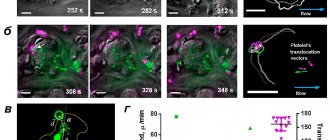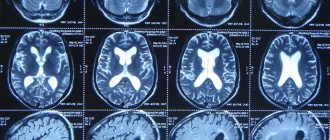Blood is the most informative biological fluid. A biochemical blood test allows you to assess the intensity and direction of metabolic processes and clarify the antigenic status. The data clarifies the features of protein, fat, carbohydrate metabolism, enzyme concentrations, and excludes or records changes in homeostasis.
Patients' blood is taken from the ulnar vein (volume 5–20 ml). The selection is carried out on an empty stomach so that the interpretation of the biochemical blood test is reliable. Before taking tests for the concentration of lipoproteins or cholesterol, you should undergo a 12-14-hour fast. The determination of uric acid will be reliable if 3 days before sampling you exclude dishes from the liver, kidneys, coffee, and tea.
Complexes with this research
Anti-aging diagnostics in postmenopause Control of age-related changes during postmenopause 12,860 ₽ Composition
Male check-up No. 1 39 studies for annual preventive examination 18,920 ₽ Composition
Women's anti-aging diagnostics Monitoring of basic blood parameters in women aged 40+ 12,280 ₽ Composition
IN OTHER COMPLEXES
- Advanced anti-aging diagnostics in postmenopause RUB 29,710
- Advanced women's anti-aging diagnostics RUB 29,130
- Biochemistry of blood. 13 indicators 4,110 ₽
- Women's check-up No. 1 RUB 19,720
- Vegetarians and vegans 5,890 RUR
Who needs to get tested
Blood test for albumin
used in conjunction with data from other studies in the diagnosis of many diseases. Most often, the analysis is prescribed for suspected pathologies of the kidneys and liver. Its results are also used to assess the health status of patients with cancer diagnoses, major injuries or burns. The test is prescribed independently or in combination with other tests. The composition of the examination required in a particular case is determined by the doctor based on the patient’s complaints, examination results, and medical history.
Detailed description of the study
Albumin is a blood plasma protein that, by mass, occupies more than half of all plasma proteins. It performs a number of important physiological functions:
- Maintaining physical and chemical blood parameters: viscosity, pH, oncotic pressure;
- Regulation of circulating blood volume and its balance with intercellular fluid;
- Transport of certain hormones, drugs, fats and their complexes;
- Calcium binding and participation in its metabolism;
- Protein reserve: if there is not enough protein in food, albumin can become its source.
Albumin is synthesized in the liver under the influence of thyroid hormones and growth factors, and is excreted by the kidneys. If too little of it is produced in the liver or if it is excessively excreted in the urine, its plasma concentration decreases. This condition is called hypoalbuminemia.
The causes of low albumin levels can be acute and chronic liver diseases, which affects its synthetic function, kidney pathologies, and insufficient protein intake from food. Hypoalbuminemia can be a manifestation of hormonal diseases, intestinal pathologies and cancer. Regardless of the cause, a decrease in plasma albumin levels manifests itself externally as edema.
Physiologically, this is reflected in the properties of blood and transport functions. For example, the content of free molecules of drugs taken in the blood will increase. This may increase their side effects.
Increases in plasma albumin levels are rare: with dehydration or recent intravenous protein administration.
Biochemical analysis: albumin
Maintaining optimal levels of this protein is extremely important for the functioning of the body as a whole. The volume of blood circulating in the body depends on this. In addition, the protein is responsible for regulating osmotic pressure. This indicator changes under the influence of many factors (for example, after eating salty foods). Therefore, its regulation is a very important process. Albumin is also responsible for the transport and storage of many biological compounds and amino acids. When examining your health status, the ALB level is one of the key indicators.
Albumen
Material for research: blood serum.
Albumin is the main blood protein produced in the human liver. Albumins are classified into a separate group of proteins - the so-called protein fractions. Changes in the ratio of individual protein fractions in the blood often provide the doctor with more significant information than just total protein. The determination of albumin is used to diagnose liver and kidney diseases, rheumatic diseases, and oncological diseases.
It accounts for more than half of all blood proteins. Synthesized in the liver, the half-life is 17 days. Since albumin molecules take part in binding water, when its level drops below 30 g/l, part of the water moves from the vascular bed to denser tissues, causing edema.
Functions of albumins:
- Maintaining oncotic pressure of blood plasma. Therefore, when the albumin content in the plasma decreases, the oncotic pressure drops, and the fluid leaves the bloodstream and enters the tissue. “Hungry” edema develops. Albumin provides about 80% of the oncotic pressure of plasma. It is albumins that are easily lost in the urine during kidney disease. Therefore, they play a large role in the drop in oncotic pressure in such diseases, which leads to the development of edema.
- Albumin is a reserve of free amino acids in the body, formed as a result of the proteolytic breakdown of these proteins.
- Transport function. Albumin transports many substances in the blood, especially those that are poorly soluble in water: free fatty acids, fat-soluble vitamins, steroids, hormones (thyroxine, triiodothyronine, cortisol), metabolites (uric acid, bilirubin), some ions (Ca2+, Mg2+). To bind calcium, the albumin molecule contains special calcium-binding centers. In combination with albumin, many drugs are transported, for example, acetylsalicylic acid, penicillin.
A biochemical blood test for albumin may show a slight decrease in protein levels in the blood of a pregnant woman, during lactation, and in those who smoke. Increased albumin in the blood occurs due to dehydration, loss of fluid from the body. Albumin provides about 80% of the oncotic pressure of plasma. It is albumins that are easily lost in the urine during kidney disease. Therefore, they play a large role in the drop in oncotic pressure in such diseases, which leads to the development of edema.
The level of albumin in the blood is an indicator of the well-being of the body.
Increased albumin levels: almost never occur, and if detected, it usually causes a decrease in water content, which leads to dehydration.
Decreased albumin levels (hypoalbuminemia): Observed with insufficient protein intake from food (fasting, cachetsia), impaired absorption of protein breakdown products through the gastrointestinal mucosa (enteritis, removal of part of the stomach, oncology); decreased synthesis of vitamin A; chronic liver diseases (hepatitis, cirrhosis, atrophy, carcinoma); malabsorption syndrome (gastroenteropathy) and gastrointestinal pathology; chronic renal pathology; thermal burns; tissue injuries; after bleeding; in the postoperative state, as well as in sepsis and infectious diseases; thyrotoxicosis, rheumatic diseases.
Preparation for the study: blood sampling is performed strictly on an empty stomach.
Albumin and its biochemical norm (ALB)
Total protein is represented by several fractions, the main one being albumin. The role of the latter is associated with maintaining a constant volume of fluid in the blood and transporting various chemical compounds. Since the synthesis of this protein occurs in the liver, its concentration in the blood can be used to judge the functioning of hepatocytes and the presence of liver pathology.
The starting material for the formation of protein molecules is amino acids. Some of them are synthesized endogenously, and the other part comes from food. In this regard, the determination of ALB is necessary for a full study of protein metabolism and the plastic (regenerative) capabilities of the body. The last factor is of particular importance in studying the dynamics of patient management after major operations, injuries, burns; it allows one to predict the healing process and, if necessary, adjust it in case of hypoalbuminemia.
In a healthy adult, the norm is 35-50 g/l. A decrease in concentration is observed when the synthetic function of the liver is impaired due to:
- Toxic or viral hepatitis;
- Fatty hepatosis;
- Alcoholic or biliary cirrhosis;
- Growth of primary tumors (hepatocellular or cholangiocellular cancer);
- Metastatic lesion.
The deficiency may also be caused by:
- Low protein content in food;
- Prolonged fasting;
- High need for a recovery period after surgery and serious injuries;
- Increased utilization during cancer intoxication;
- Losses due to fluid accumulation in the chest (hydrothorax) and abdominal cavity (ascites);
- Kidney failure, which is accompanied by loss of protein in the urine.
For diagnostic and preventive purposes, it is necessary to study ALB in patients:
- After major invasive interventions;
- After prolonged therapeutic fasting (surgeries on the digestive organs, pancreatitis);
- A few days after the evacuation of pleural and abdominal height;
- If liver and kidney symptoms occur;
- In case of edema of unknown origin;
- With intensive treatment with corticosteroids;
- In athletes and people involved in heavy physical labor.
Timely detection of albumin deficiency allows one to avoid the development of severe consequences in the form of “hunger edema”, a decrease in the body’s regenerative function and the ability to eliminate toxins.
Physiological changes in blood parameters during pregnancy
10125 10 October
IMPORTANT!
The information in this section cannot be used for self-diagnosis and self-treatment. In case of pain or other exacerbation of the disease, diagnostic tests should be prescribed only by the attending physician. To make a diagnosis and properly prescribe treatment, you should contact your doctor. Changes in coagulogram and clinical blood test parameters.
Changes in the coagulogram (No. , , , , 190, 164, 194)* of a pregnant woman are a physiological process associated with the appearance of the uteroplacental circulation.
This process is associated with the evolutionary, adaptive reactions of the body of a pregnant woman. A woman’s body prepares for costs during pregnancy and possible blood loss during childbirth. During the physiological course of pregnancy, the activity of the procoagulant link increases. Already in the 3rd month of pregnancy, fibrinogen increases (this is factor I (the first) of the plasma coagulation system) and reaches its maximum values on the eve of childbirth. Therefore, gynecologists reasonably recommend monitoring this indicator during pregnancy (once per trimester, if there are deviations in these indicators, more often, once a week). At the end of the third trimester of pregnancy, the concentration of fibrinogen in the serum increases, which may correspond to an increase in the processes of intravascular coagulation in the uteroplacental bloodstream. Simultaneously with the increase in fibrinogen and the activity of the external coagulation pathway, the activity of the internal blood coagulation mechanism also increases, and a shortening of the aPTT is noted. Other parts of the hemostatic system also change during pregnancy, such as the coagulation inhibitor antithrombin III, which has a protein structure and has the ability to inhibit two or more coagulation factors, fibrinolysis and the complement system. As pregnancy progresses, there is a gradual decrease in the activity of antithrombin III. In pregnant women, starting from early pregnancy, the level of D-dimer in the blood gradually increases. By the end of pregnancy, its values can be 3-4 times higher than the initial level. Lupus anticoagulant should not be produced normally in a pregnant woman. Pregnant women may experience minor changes in the general blood count (No. 5). Indicators such as hemoglobin and hematocrit may decrease in the second half of pregnancy, and leukocytes may increase (No. 119)*. Changes in biochemical parameters
During pregnancy, a decrease in the total protein concentration in the blood plasma is due to both partial dilution, as a result of fluid retention in the body, and a decrease in the concentration of albumin (No. 10)*. The decrease in albumin is due to its increased consumption on biosynthetic processes. However, it is impossible to exclude the factor of increased vascular permeability and redistribution of fluid and protein in the intercellular space, and hemodynamic disturbances. Changes in the concentration of blood proteins are also detected on the proteinogram. In the first and second trimester of pregnancy, albumin decreases, which is associated with physiological hypervolemia. In the third trimester, an increase in the alpha-1-globulin fraction (No. 29)* and alpha-fetoprotein (No. 92)* is detected. Alpha-2-globulin fraction (No. 29)* can increase due to proteins associated with pregnancy (begin to increase from 8-12 weeks of pregnancy and reach a maximum in the third trimester). Beta globulins (No. 29)* increase due to an increase in transferrin concentration (No. 50)*. Also, in most cases there is a slight increase in the level of gamma globulins (No. 29)*.
Minor changes in C-reactive protein (No. 43)*, observed more often in early pregnancy, may be the body’s response to proliferation processes (increased cell division). Changes in circulating blood volume (CBV) and blood supply to the kidneys lead to changes in the nitrogen excretory function of the kidneys. There is a delay and accumulation of nitrogenous substances, while the amount of urea (No. 26)* decreases, especially in late pregnancy due to increased protein utilization (positive nitrogen balance).
Creatinine (No. 22)* decreases maximum in the 1st - 2nd trimester (its concentration can decrease by almost 1.5 times), which is associated with an increase in the volume of muscle mass of the uterus and fetus. The level of uric acid (No. 27)* is often reduced due to increased blood supply to the kidneys, but even minor renal dysfunction can lead to an increase in this indicator, and this is regarded as symptoms of toxemia.
Lipid metabolism changes significantly during pregnancy (profile No. 53)*. As oxidative processes intensify, there is an increased utilization of cholesterol in the adrenal glands and placenta. This leads to compensatory transient hypercholesterolemia, characterized by an increase in cholesterol and HDL levels. The HDL level remains virtually unchanged. An increase in estrogen levels leads to hypertriglyceridemia, which is facilitated by hypoproteinemia and functional cholestasis. At the same time, fat deposition in the mammary glands and subcutaneous fat increases; this process is also associated with an increase in the transition of carbohydrates to fats due to increased insulin production.
An indicator reflecting the level of endogenous insulin secretion is C-peptide (No. 148)*. Glucose values (No. 16)* may change slightly without reaching the level of hyperglycemia. Since during pregnancy the glomerular filtration rate increases and the permeability of the epithelium of the renal tubules increases, glucosuria (physiological) may periodically be observed. Most often, glucosuria appears during pregnancy 27 - 36 weeks. Features of mineral metabolism in healthy pregnant women compared to non-pregnant women are the retention of sodium, potassium, chlorine (No. 39)*, phosphorus (No. 41)* salts in the body; it is changes in phosphorus levels in the body of a pregnant woman that are associated with an increase in alkaline phosphatase (No. 36) *. This is due to changes during pregnancy in bone tissue and changes in the liver. As you know, during pregnancy the need for calcium salts, which are necessary for the formation of the fetal skeleton, increases, and the mother may experience calcium deficiency (No. 37)*. Hypocalcemia in pregnant women can manifest itself in muscle cramps and spastic phenomena. Increased iron intake during pregnancy can lead to anemia. This condition is characterized by a decrease in iron (No. 48)*, ferritin (No. 51)*, vitamins: B12 (No. 117)*, folic acid (No. 118)*. Changes in the endocrine system
The pituitary gland, especially the anterior lobe, enlarges. Pituitary hormones ACTH (No. 100)*, prolactin (No. 61)* play a large role in changing the metabolic processes of the pregnant woman’s body. Therefore, these hormones may be elevated. The placenta also has hormonal activity. It produces progesterone (No. 63)*, free estriol (No. 134)*, b-hCG (No. 66)*, these hormones are similar in their action to somatotropin (No. 99)*. The thyroid gland also undergoes changes, it enlarges somewhat, and in the first half of pregnancy its hyperfunction is noted. There is an increase in free T4 (No. 55)*, with normal T4 levels (No. 54)*. There is also an increase in the function of the parathyroid glands with a relative increase in parathyroid hormone (No. 102)*. The production of FSH (No. 59)* decreases during pregnancy.
* — Numbers of studies in the Independent Laboratory INVITRO.
When preparing the article, data from the Laboratory Service Bulletin No. 9, 2001 were used.
IMPORTANT!
The information in this section cannot be used for self-diagnosis and self-treatment. In case of pain or other exacerbation of the disease, diagnostic tests should be prescribed only by the attending physician. To make a diagnosis and properly prescribe treatment, you should contact your doctor.
Low albumin levels may predict poor outcome in patients with COVID-19
The COVID-19 pandemic has claimed more than four hundred thousand lives worldwide, and Spain is one of the worst affected countries. At the time of writing this article, there have already been more than 25,000 deaths due to COVID-19 in Spain. The article's authors explain that despite this, little information is available regarding the underlying characteristics and risk factors for patients at risk of hospitalization due to infection. This study included 48 patients admitted with COVID-19.
The scientists explained that it was necessary to identify factors on the basis of which an unfavorable prognosis for a particular patient can be made. The team said many studies show that there is suppression of the immune system during infection. This may be a key factor that leads to the progression of a mild infection to a more severe and ultimately life-threatening condition in the patient. Because inflammation plays a key role, factors that influence inflammation may be important in the progression of the disease.
Albumin is a protein produced in the liver and found in the blood. People with low albumin levels may have liver and kidney problems. Low albumin levels are also seen in patients with malnutrition, severe infection, thyroid disease, and inflammatory bowel disease.
The study involved 52 patients hospitalized due to complications of COVID-19 until March 31, 2020. Of these patients, 48 had severe acute respiratory syndrome due to SARS-CoV-2. They all tested positive for the virus. Data were collected between 15 and 31 March 2021. The aim of the study was to describe the clinical characteristics and epidemiological features of severely and critically ill patients.
Among the 48 patients, 21 were admitted to intensive care and 27 were not. All of these patients were residents of the island of Mallorca in Spain. Their average age was 66 years, and 67% were men. The age distribution was similar among patients. The following conclusions were made:
before hospitalization included fever (all patients), cough (85% of patients), difficulty breathing (76% of patients), diarrhea (42% of patients, and weakness (21%)).
The main reason for hospitalization among patients was low blood oxygen levels (SpO2 below 90%) and the presence of pneumonia in both lungs (94% of cases).
Among all patients, 70% had high blood pressure, 62% had high cholesterol and 30% had heart disease.
Those admitted to the intensive care unit (ICU) had more difficulty breathing.
Acute respiratory syndrome (ARDS) developed in all patients admitted to the ICU.
All 48 participants required oxygen therapy.
Laboratory tests showed that intensive care unit patients had low lymphocyte counts and low blood albumin levels.
Among patients admitted to the ICU, there was a significant increase in inflammatory markers such as lactate dehydrogenase (LDH), C-reactive protein (CRP), and procalcitonin compared with those not admitted to the ICU.
Lower blood albumin levels were significantly associated with worse outcome and longer hospital stay. The risk of death was also higher among people with lower blood albumin levels.
In red blood cell studies, mean corpuscular volume of red blood cells was lower among patients who died from infection and its complications.
At the end of the study (April 28, 2021), the mortality rate was 21%: 8 patients in intensive care units and 2 in other units died from infection.
At the end of the study, all non-ICU patients were discharged from the hospital. While among the intensive care unit patients, one third remained in hospital at the end of the study (5 in the intensive care unit and 2 transferred to general wards).
Conclusions and implications
People with influenza A (H1N1) and human immunodeficiency virus infection (HIV) also had a poorer outcome if they had lower albumin levels, the paper's authors reported. Among patients with influenza, the need for respiratory support increased with low albumin levels, and among patients with HIV, low albumin levels meant a greater risk of inflammation and atherosclerosis.
This was a relatively small study that showed that certain laboratory parameters may be important in characterizing the severity of illness in patients with COVID-19. “Lower albumin levels were associated with worse outcomes in patients with COVID-19. Albumin may be important because of its association with disease severity and mortality in patients infected with SARS-CoV-2."
The scientists added: “This small case series provides the first steps towards a comprehensive clinical characterization of severe and critical adult patients with COVID-19 in Spain.”
Expert opinion
: Of course, based on such a small study, no final conclusions can be drawn. But now any additional information can adjust the forecasts for patients with COVID-19. Moreover, determination of albumin level is included in the list of standard laboratory tests.
Albumin, globulins, urea – indicators of protein metabolism
A decrease in the amount of albumin to a level of less than 30 g/l causes edema. Its norm ranges from 35 to 55 g/l. A decrease indicates malnutrition of protein products, toxic liver diseases, colitis, and enteritis. Normally, the albumin content is in the range of 40–60% of the total amount of protein fractions.
The amount of α-globulins is 9–18%, β- and γ-globulins are 8–15 and 12–22%, respectively. An increase in globulins confirms inflammation. An indicator of an acute form of inflammation is C-reactive protein, which, as shown by a biochemical blood test, is not normally found in healthy people.
Blood urea is an indicator of protein metabolism. A biochemical blood test in children shows that normally its level ranges from 1.8 to 6.4 mmol/l, in adults – from 2.1 to 7.1. An increase indicates consumption of high-protein foods, kidney disease, a decrease indicates fasting or a violation of the protein-synthesizing function of the liver.
Cholesterol and lipids
When determining the amount of cholesterol, pay attention to advanced indicators of a biochemical blood test: both the total concentration and the ratio of different lipid fractions. The norm is considered to be within the range of 3.6–5.2 mmol/l; an increase is recorded when it is above 6.5. Cholesterol consists of HDL and LDL (high and low density lipids).
If VLDL (very low density lipids) and chylomicrons predominate, this indicates vascular congestion, atherosclerosis, and hypertension.
An additional indicator for diagnosing coronary artery disease and atherosclerosis (using biochemical blood test data in adults) is the amount of triglycerides. Their norm is 1.7–2.25 mmol/l, the highest level starts at 2.26.










